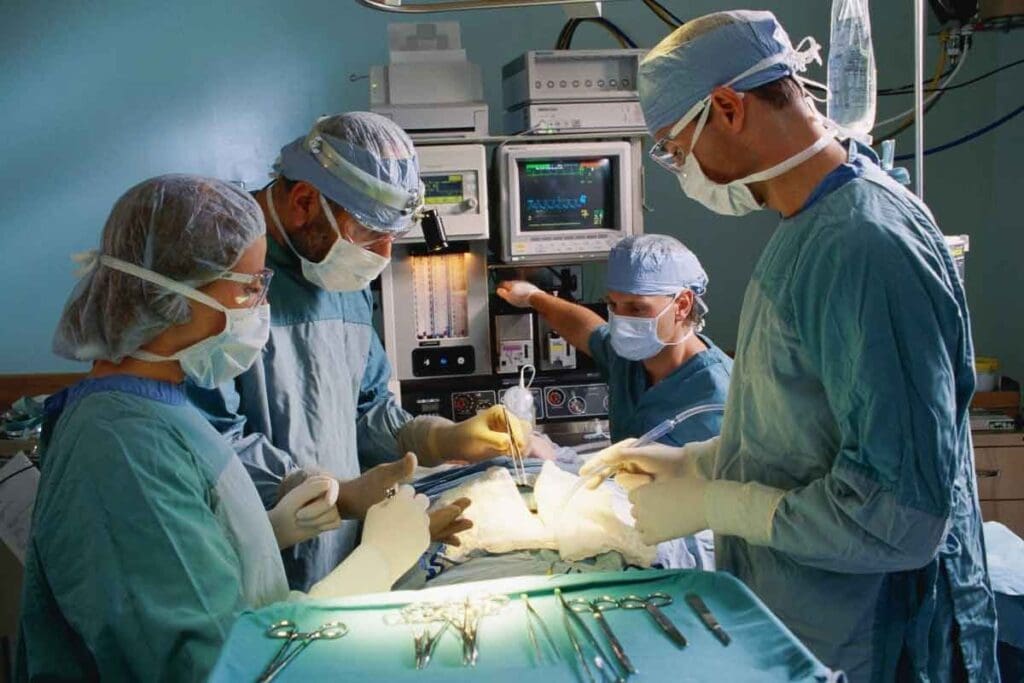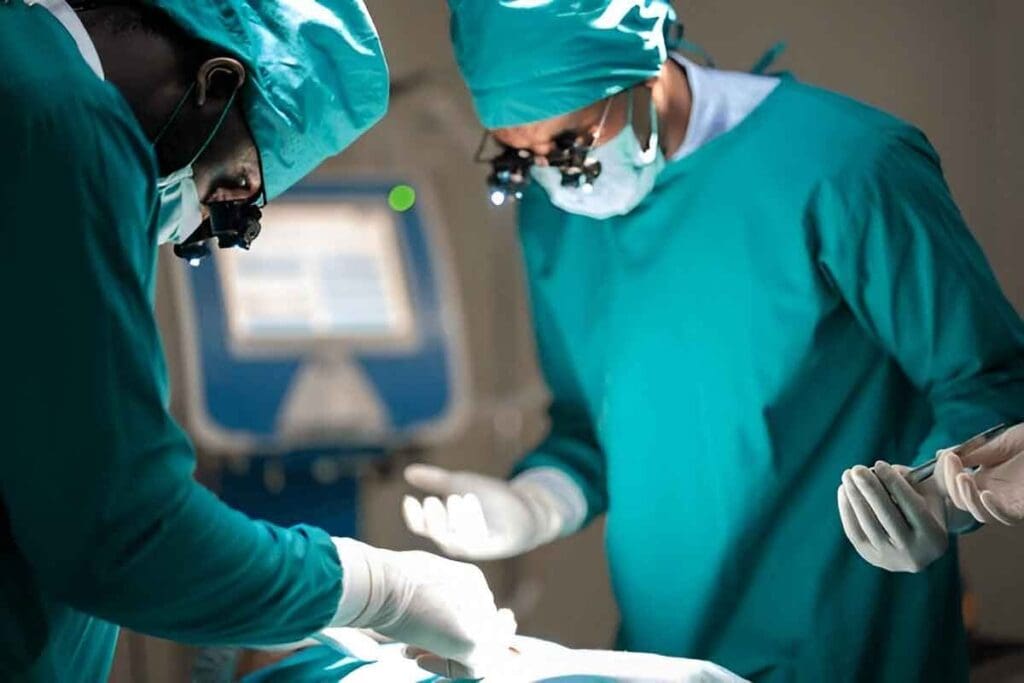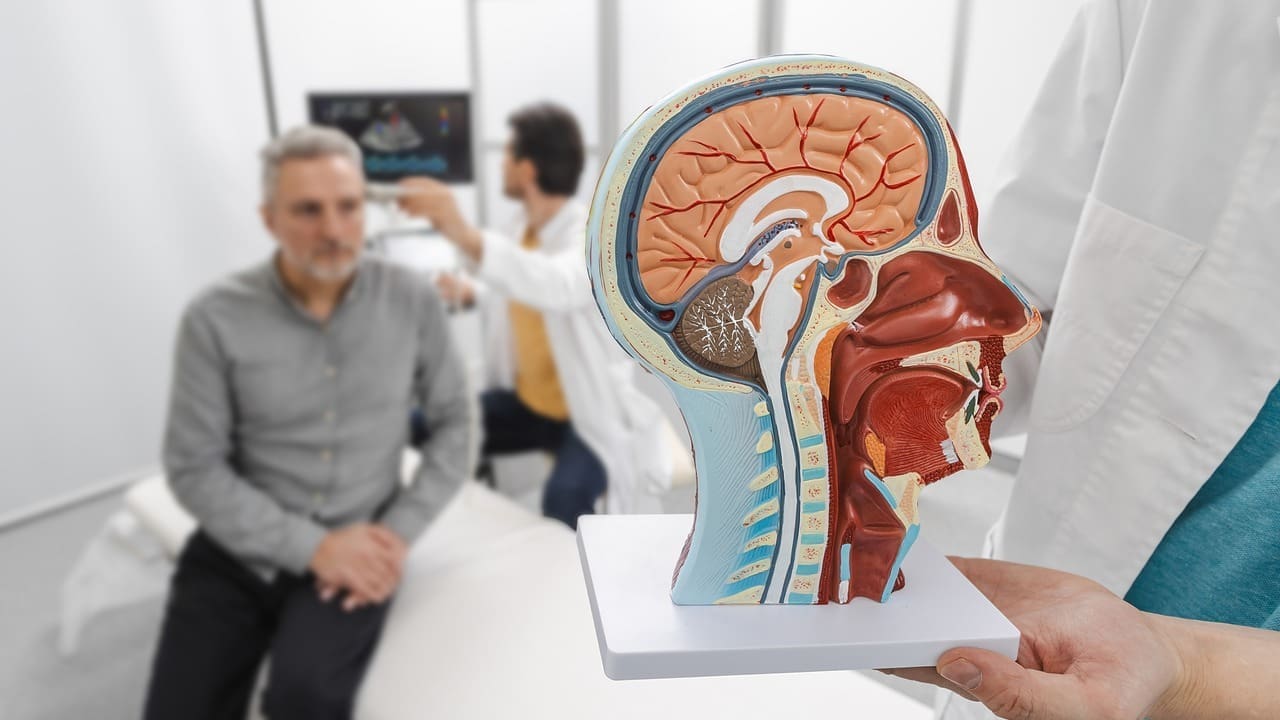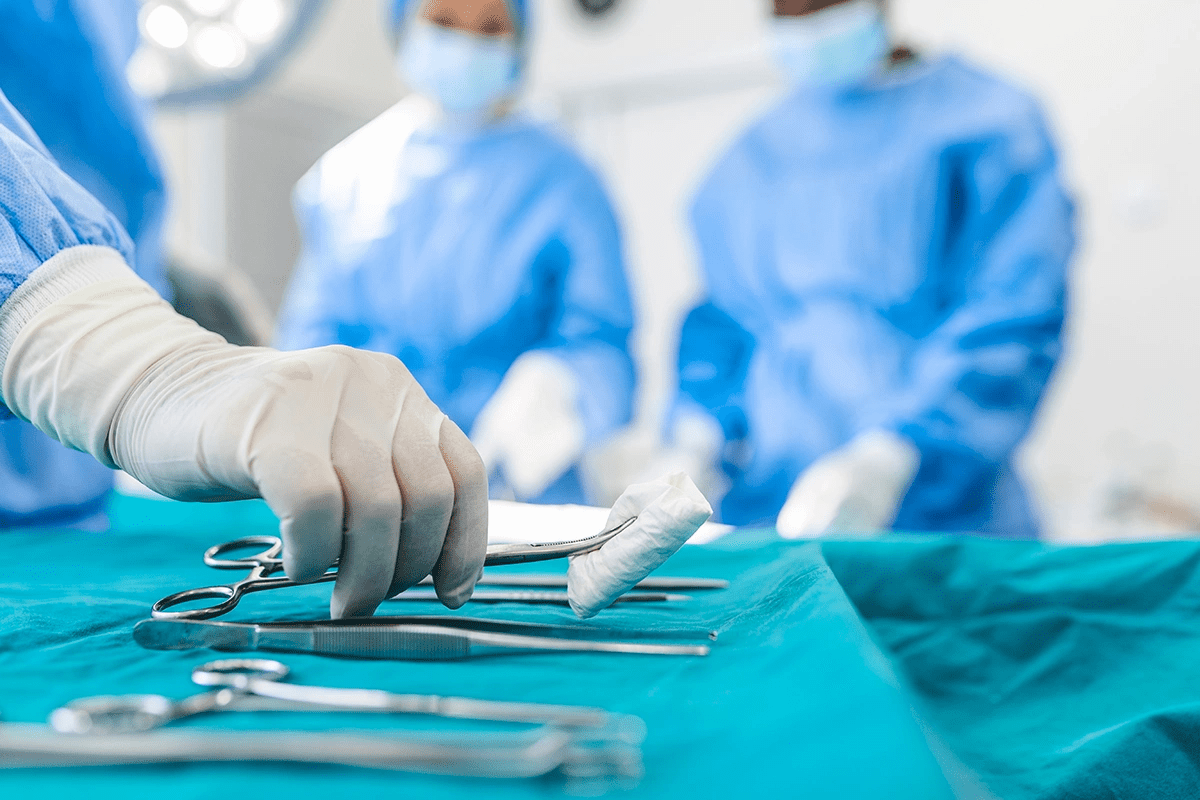Last Updated on November 26, 2025 by Bilal Hasdemir

Coronary artery bypass grafting (CABG) is a life-changing surgery that helps blood flow in those with severe heart disease. Learn how a heart artery operation is performed step by step and how CABG surgery improves circulation.
The surgery is complex, but knowing the steps can ease worries. A clear guide helps patients understand the CABG procedure and its benefits.
Key Takeaways
- CABG surgery improves blood flow in patients with severe coronary artery disease.
- The procedure involves bypassing blocked coronary arteries with healthy blood vessels.
- CABG can significantly enhance a patient’s quality of life.
- The surgery is a complex process, but understanding the steps can help alleviate anxiety.
- Patients can benefit from a clear, step-by-step guide to the CABG procedure.
Understanding CABG: Definition and Clinical Significance

Coronary Artery Bypass Grafting (CABG) is a key surgery to help the heart get more blood. It makes blocked or partially blocked arteries work again. This way, the heart’s blood supply is restored.
What CABG Abbreviation Medical Stands For
CABG means Coronary Artery Bypass Grafting. It’s a term used a lot in medicine. It talks about a surgery where a healthy blood vessel is grafted onto a blocked artery. This creates a new path for blood.
CABG Surgery Meaning and Purpose
The main goal of CABG surgery is to ease symptoms of coronary artery disease. This includes angina. It also aims to make life better for the patient.
By bypassing blocked arteries, CABG helps blood flow to the heart muscle. This lowers the risk of heart attack and boosts survival chances.
Epidemiology of Coronary Artery Disease
Coronary artery disease is a big problem worldwide. It’s a top cause of sickness and death. The World Health Organization says it leads to about 17.9 million deaths each year.
This disease is so common that many people need CABG surgery. It’s a big part of heart care.
CABG is very important for treating coronary artery disease. It’s often suggested for those with complex diseases or who haven’t gotten better with other treatments.
Heart Artery Operation: Anatomical Considerations

Understanding the heart’s artery structure is key to heart artery operations. Knowing the coronary artery anatomy is vital for coronary artery bypass grafting (CABG) success.
Coronary Artery Anatomy
The coronary arteries carry blood to the heart muscle. Their anatomy varies among people. The left main coronary artery and right coronary artery branch off from the aorta. Knowing this anatomy helps pinpoint areas for bypass grafting.
Pathophysiology of Coronary Artery Obstruction
Plaque buildup blocks the coronary arteries, reducing blood flow to the heart. This can lead to angina, heart attacks, or other heart problems. The pathophysiology involves inflammation, lipid buildup, and clotting. Grasping these processes is essential for treating coronary artery disease.
Bypass Graft Meaning in Cardiovascular Surgery
In heart surgery, a bypass graft is used to bypass blocked arteries. Common grafts are the saphenous vein and internal thoracic artery. The graft choice depends on the patient’s anatomy and the surgeon’s preference. The aim is to improve blood flow to the heart muscle, boosting cardiac function and patient health.
The surgery uses a graft to reroute blood around narrowed or blocked arteries. This improves blood flow to the heart muscle. It’s a key treatment for coronary artery disease, leading to better patient outcomes.
Preoperative Assessment and Patient Selection
Before CABG surgery, a detailed preoperative assessment is key. It helps evaluate patient risk and improve outcomes. This evaluation checks if the patient is right for surgery.
Cardiac Evaluation and Diagnostic Testing
A detailed cardiac check is vital. Tests like echocardiography, stress testing, and coronary angiography are used. They look at the heart’s function and spot risks.
Risk Stratification Models
Risk models, like the EuroSCORE, predict surgery risks. They look at age, health issues, and heart function.
Patient Optimization Protocols
Protocols aim to reduce risks and achieve better outcomes. They include managing pre-surgery meds, stopping smoking, and improving health conditions. For example, diabetes patients get advice on blood sugar control, and those with high blood pressure learn how to manage it.
Important parts of patient optimization are:
- Pre-surgery coronary angiography to check the heart’s blood vessels
- Cardiac rehab to boost heart function
- Nutrition advice to improve health
Good preoperative checks and patient selection are vital for CABG surgery. They help ensure patients get the best care and results.
Surgical Planning and Graft Selection
The success of a CABG operation depends on good surgical planning and the right graft choice. Planning well means picking the best grafts for the patient’s body and disease level.
Saphenous Vein Harvest Technique
The saphenous vein harvest is a common method for getting grafts. Surgeons use a minimally invasive way to lessen harm and speed up recovery.
Internal Thoracic Artery Preparation
The internal thoracic artery is chosen for its high success rate. Preparing it involves careful work to keep it healthy.
Radial Artery Considerations
Radial artery grafts are an option, with benefits in some cases. But they need careful thought about the patient’s blood vessels and risks.
Choosing a graft type is complex. It depends on the patient and the surgeon’s skills.
Operating Room Setup for CABG Procedure
Setting up the operating room for CABG surgery is a detailed task. It involves CABG nursing responsibilities, getting all the equipment ready, and planning the anesthesia. A well-prepared operating room is key to a successful CABG procedure.
CABG Nursing Responsibilities
CABG nursing is very important in the care before, during, and after surgery. Nurses do patient assessments, watch over the patient, and keep the area clean. Their work is essential for keeping patients safe and the surgery a success.
Equipment and Instrument Preparation
Getting the operating room ready means preparing special equipment and tools for CABG surgery. This includes machines for heart and lung support, surgical tools, and devices to monitor the patient. All equipment must work correctly for the surgery to go smoothly.
Anesthesia Protocol for Cardiac Surgery
The anesthesia protocol for heart surgery aims to keep the patient stable and comfortable. The anesthesia team plans and watches over the patient closely. They use the right anesthetics and manage the patient’s blood flow.
In summary, setting up the operating room for CABG is a detailed process. It needs careful planning and teamwork from the surgical team, including CABG nursing and anesthesia experts.
Step 1: Surgical Access and Preparation
Getting to the heart is the first big step in CABG surgery. It involves careful techniques to get a good view and avoid problems.
Median Sternotomy Technique
The most common way to get to the heart is through a median sternotomy. This means cutting the sternum to open up the chest. It gives a clear view of the heart and the big blood vessels.
The median sternotomy starts with a cut down the middle of the sternum. Then, a special saw is used to split the sternum carefully.
Pericardial Incision and Exposure
Once inside the chest, the next step is to open the pericardium. The pericardial incision lets the surgeon see the heart and find the coronary arteries. The pericardium is cut lengthwise, and stitches are used to pull it back.
Conduit Harvesting Procedure
While the surgeon is getting to the heart, the team starts preparing the grafts. These grafts are usually the saphenous vein or the internal thoracic artery. The choice depends on the patient’s body and the surgeon’s choice.
Heparinization Protocol
Before starting the heart-lung machine, the patient gets heparin to stop blood from clotting. The heparinization protocol gives a certain amount of heparin based on the patient’s weight. The doctor checks the blood’s clotting time to make sure it’s right.
Step 2: Cardiopulmonary Bypass Establishment
Setting up cardiopulmonary bypass is key in CABG surgery. It moves blood flow away from the heart and lungs. This lets surgeons work on a heart that’s not beating. The heart-lung machine acts as the heart and lungs during this time.
Aortic and Venous Cannulation
The first step is cannulation. This means putting cannulas into the aorta and veins to move blood into the bypass circuit. Aortic cannulation uses a cannula in the ascending aorta. Venus cannulation puts a cannula in the right atrium or vena cava.
Initiation of Bypass Circuit
After cannulation, the bypass circuit starts. The pump begins to circulate blood. The circuit is filled with a solution to keep blood pressure up and organs well-perfused.
Cardioplegia Administration
To protect the heart, cardioplegia is given. It stops the heart from beating and lowers its activity. This reduces damage. Cardioplegia can go through the aortic root or directly into the coronary arteries.
Myocardial Protection Strategies
Many strategies protect the heart during CABG surgery. These include keeping the heart at the right temperature and using special cardioplegic solutions. Ensuring the heart gets enough blood is also important.
Step 3: Performing Coronary Anastomoses
In CABG surgery, making good coronary anastomoses is key to getting blood to the heart again. This step is about attaching the graft to the coronary artery. It’s done both at the start and end of the blockage to make sure blood flows right.
Distal Anastomosis Technique
The first thing done is the distal anastomosis. This connects the graft to the coronary artery past the blockage. It needs careful stitching to make sure there are no leaks. The surgeon has to be very gentle with the graft and artery to avoid any harm.
Key considerations for distal anastomosis include:
- Selecting the right suture material
- Ensuring precise suture placement
- Checking if the anastomosis is strong
Proximal Anastomosis Procedure
After the distal anastomosis, the proximal anastomosis is done. This connects the graft to the aorta or another good spot. It’s all about planning well to place the graft right and ensure good flow.
The proximal anastomosis technique includes:
- Getting the aortic site ready for the anastomosis
- Attaching the graft with a precise stitch
- Checking if the graft is open
Sequential Grafting Methods
Sequential grafting uses one graft for many coronary branches. This method can cut down on the number of grafts needed and lessen the surgery’s impact.
Quality Assessment of Anastomoses
Checking the quality of the anastomoses is very important for CABG surgery. Tools like transit-time flow measurement help make sure the graft is working well.
Quality assessment includes:
- Checking if the graft is flowing well and open
- Looking for leaks or narrowing at the anastomotic sites
- Making sure the graft is working as it should
Step 4: Off-Pump CABG Alternative Approach
Off-pump CABG is a different way to do CABG surgery. It’s done on a beating heart, without using a heart-lung machine. This might lower the risk of some complications.
Beating Heart Surgery Techniques
Beating heart surgery, or off-pump CABG, needs special skills. Surgeons must carefully work with the heart to make the grafts. This is done without the help of a heart-lung machine.
Stabilization Device Application
Stabilization devices are key in off-pump CABG. They keep the heart area steady, making it easier to sew the graft. These devices have gotten better, making the surgery more precise.
Exposure Strategies for Target Vessels
Getting a clear view of the coronary vessels is vital for off-pump CABG. Surgeons use different methods to get a good look. They plan carefully to make sure the vessels are visible.
Hemodynamic Management During Manipulation
Keeping the heart stable is important during off-pump CABG. The anesthetic and surgical teams work together to keep the patient’s heart stable.
| Aspect | On-Pump CABG | Off-Pump CABG |
| Cardiopulmonary Bypass | Used | Not Used |
| Heart Status | Stopped | Beating |
| Potential Complications | Related to cardiopulmonary bypass | Related to heart manipulation |
Step 5: Weaning from Bypass and Closure
After placing the grafts, the team must carefully take the patient off the heart-lung machine. This is a key step with several important procedures to ensure a smooth transition.
De-airing Procedures
Before taking the patient off the machine, it’s vital to remove any air from the heart. De-airing involves shaking the heart gently and using suction to remove air bubbles. This prevents air embolism and keeps the heart and brain well-perfused.
Hemodynamic Optimization
When weaning the patient, hemodynamic optimization is essential. This means adjusting the patient’s blood volume, heart rate, and muscle strength to keep blood pressure and heart function stable. The anesthesiologist and surgical team watch these closely to make sure the heart works well without the machine’s help.
Protamine Administration
After weaning, protamine is given to reverse the blood thinning caused by heparin. This is necessary to stop excessive bleeding. The amount of protamine is carefully calculated based on the heparin used during the surgery.
Sternal Closure Technique
The last step is sternal closure. This involves closing the chest with wires, usually stainless steel or titanium. Proper closure is key to healing and to avoiding complications like sternal dehiscence.
In conclusion, weaning from bypass and closure are critical steps in CABG surgery. They require careful attention to detail. By following these steps, surgeons can ensure a successful outcome and help the patient recover well.
Immediate Postoperative Management
The time right after a CABG surgery is very important. It needs careful attention to keep patients safe and help them heal well.
Intensive Care Monitoring Parameters
In the ICU, patients are watched closely. They check heart function, breathing, and brain health to catch any problems early.
Ventilation Weaning Protocol
Helping patients breathe on their own is a big step. It starts with lowering oxygen levels and reducing pressure in the lungs. This lets the patient breathe without a machine.
Hemodynamic Stabilization Strategies
Keeping blood flowing well is key. Nurses use medicines, fluids, and check heart function to make sure organs get enough blood.
Early Complication Recognition
Spotting problems early is very important. Nurses watch for bleeding, heart issues, and heart attacks. They quickly tell doctors if they see any signs of trouble.
Nurses are very important in caring for CABG patients. Their careful watching and smart actions help patients get better.
Conclusion: Long-term Outcomes and Advances in CABG Surgery
Coronary artery bypass grafting (CABG) is a common surgery to help blood flow in those with severe heart disease. The success of CABG surgery over time depends on many things.
New techniques and materials in CABG surgery have made it better for patients. Research keeps going to find ways to make surgery safer and more effective. This includes using new grafts and doing surgeries without stopping the heart, known as off-pump CABG.
The success of CABG surgery comes from good surgery, choosing the right patients, and caring for them well after surgery. As CABG surgery gets better, it’s key to keep up with the latest to help patients the most.
FAQ
What does CABG stand for?
CABG stands for Coronary Artery Bypass Grafting. It’s a surgery to improve blood flow to the heart by bypassing blocked or narrowed arteries.
What is the purpose of CABG surgery?
CABG surgery aims to restore blood flow to the heart. It helps relieve symptoms like chest pain and shortness of breath. It also lowers the risk of heart attack in those with severe coronary artery disease.
Is CABG considered open-heart surgery?
Yes, CABG is open-heart surgery. It involves opening the chest to access the heart and perform the bypass grafting.
What are the different types of grafts used in CABG surgery?
CABG surgery uses grafts like the saphenous vein, internal thoracic artery, and radial artery. The choice depends on the patient’s anatomy and the surgeon’s preference.
What is off-pump CABG?
Off-pump CABG, or beating heart surgery, is a CABG variation. It’s done without cardiopulmonary bypass. The surgeon uses special equipment to stabilize the heart during grafting.
What is the recovery time for CABG surgery?
Recovery from CABG surgery varies. Patients usually spend several days in the hospital. They then take weeks to months to fully recover at home.
What are the risks associated with CABG surgery?
CABG surgery carries risks like bleeding, infection, stroke, and heart attack. Butthe benefits often outweigh the risks for those with severe coronary artery disease.
How is CABG surgery performed?
CABG surgery involves several steps. These include median sternotomy, pericardial incision, and cardiopulmonary bypass establishment. The procedure specifics depend on the patient’s needs and the surgeon’s technique.
What is the role of CABG nursing in the operating room?
CABG nursing is vital in the operating room. Nurses prepare the patient and equipment, assist the surgical team, and monitor vital signs during the procedure.
What are the long-term outcomes after CABG surgery?
CABG surgery often leads to positive long-term outcomes. Patients usually see improved symptoms, reduced heart attack risk, and better quality of life. Ongoing research and technique improvements continue to enhance these outcomes.
References
- Kayatta, M. O., et al. (2018). Minimally invasive coronary artery bypass grafting. Journal of Cardiac Surgery, 33(2), 77-83. https://www.ncbi.nlm.nih.gov/pmc/articles/PMC7525389/






